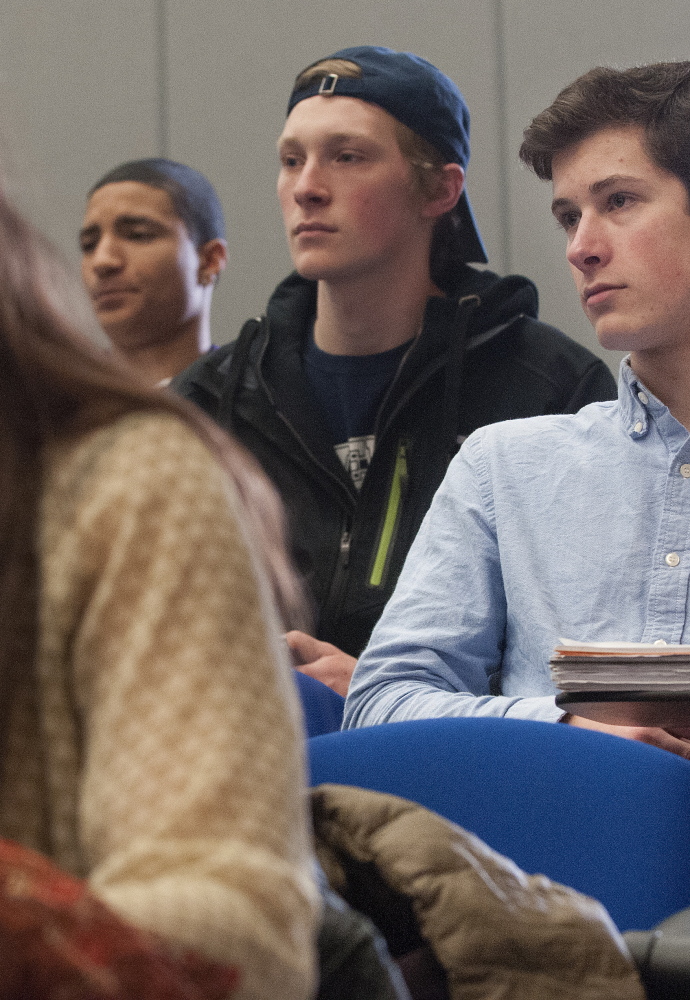Unless your last name happens to be Wallenda, chances are you’ve never attempted a high-wire act. But if you’ve taken out student loans to attend college you’ve probably used much the same daring and balancing skills.
College debt is a soaring national problem, and too many Americans are in free fall without a net.
Although students at the University of Southern Maine have benefited from some important steps USM has taken over the past couple of years to reduce student debt, students at most college and universities have not been as fortunate.
Today, 44 million Americans owe over $1.4 trillion in student debt. That’s more than twice our credit card debt, and the numbers continue to skyrocket.
A graduate of last year’s Class of 2016 on average owes more than $37,000 in student loans. That’s 6 percent higher than the year before.
What does this mounting student debt crisis mean? For one, monthly student loan payments in the hundreds of dollars can significantly hamper a graduate’s choice of profession, or their ability to purchase a home or start a family.
WEALTH GAP APPARENT
The student debt crisis adversely affects low-income students even more than everyone else, says a recent study by the Federal Reserve Bank of Boston. According to this study, they are hit hard in a couple of key ways.
First, it should come as no surprise that low-income students on average need to take out more student loans to afford college. Second, unlike their wealthier college peers, who may have strong family and friend connections in the professional arena, lower-income students generally have less access to the best-paying jobs after graduation. That makes it more difficult for them to pay off their loans, exacerbated by the fact that their families are generally not in a position to help.
Yet as bad as the student debt crisis is for low-income college graduates, here’s the population group that is absolutely hit the hardest: those who take out student loans and do not graduate. These former students assume debt and have nothing to show for it. And while it is true that college graduates make substantially more than non-college graduates, studies show that people with some college but no degree do not earn much more than those with no college at all.
As a president of a public university, I believe strongly we have a moral obligation to do all we can to help students – most especially those taking out student loans – successfully navigate the high-wire act of getting from Point A of starting college to Point B of graduating. And to do so with as little debt as possible.
With respect to that and the looming student debt crisis, USM has set two critically important goals: 1) to minimize as much as possible the need for student loans, and 2) provide the support necessary to make sure students graduate.
We still have a long way to go in both areas, but in recent months we have put our resources where our mouths are, and we are beginning to see success.
In the past two years, for example, USM has increased scholarship funding from $3.5 million to $12 million. During that same time period, USM has also increased its commitment to need-based grant funds. Because scholarships and grants do not have to be paid back by the student, that means fewer loans and less debt.
GOING THE EXTRA LAST MILE
At the same time, USM has also established new scholarships for transfer students, a Last Mile Scholarship to get students to the graduation finish line and new merit scholarships for graduate students.
Most recently, we launched a $15 million campaign to establish New Promise Scholarships, which focus on making a USM education a very affordable option for students who come from youth-development organizations like the Boys & Girls Clubs, the YMCA, Big Brothers/Big Sisters and others.
Through these initiatives, USM has bucked the national trend, seeing a drop last fall in average student debt. And we fully expect to drop further over the next few years as the recipients of our more recent investments begin to graduate.
At the same time, we expect our investments in student scholarships and grant aid will keep more of our economically fragile student in school and working towards that essential college degree.
That’s what we’re doing to steady our students on the high wire, to support them as they deftly keep their balance between minimizing debt and achieving their degree, to make sure they are always looking straight ahead and keep moving forward.
Compared to the flying Wallendas, this may be less thrilling, but without question, more fulfilling.
Send questions/comments to the editors.



Comments are no longer available on this story